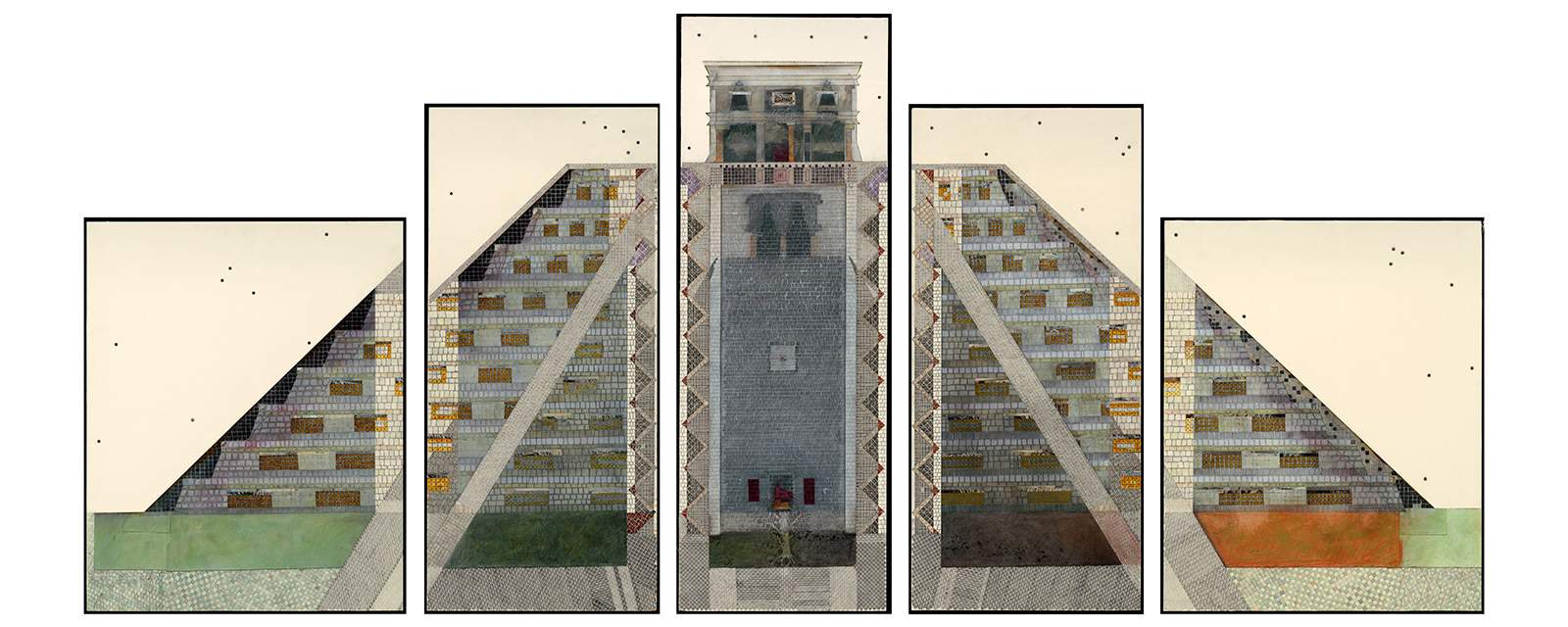El Castillo
Ceremonial Pyramid -- Chichen Itza, Mexico -- Mayan
Eighth drawing in the Anastylosis Project
Researched in 1980-1981 and 2004, drawn in 2009
A central drawing challenge the Anastylosis Project attempts to unravel is the role of time in the life of these buildings. Drawings are adept at representing the two dimensions of height and width, and, with attention to perspective, can suggest the third dimension of depth, as well. But drawings are not well suited to presenting the fourth dimension of time. So, for this eighth drawing, I chose a relatively simple Mayan pyramid, El Castillo from Chichen Itza on the Yucatan Peninsula of Mexico. It possesses many elements referring to time, including an earlier smaller pyramid within the structure. This earlier version of the temple is visible in the drawing as a darker structure within the later building. This earlier pyramid contains the interior rooms where a Chac Mool and a red Jaguar throne can be seen.
People of the 12th century were concerned with the observation and marking of time. A monument like El Castillo gave physical form to these concerns and knowledge. The stars added to the drawing reference the fact that this building, like many others of the 12th century, could be considered an observatory. On the equinoxes the late afternoon sun strikes the northwest corner of the pyramid and casts a series of triangular shadows against the northwest balustrade, creating the illusion of the feathered serpent “crawling“ down the pyramid. And, functioning as a calendar, the stairways have 365 steps up to the central shrine.
Panel Details
an example of a slideshow format
